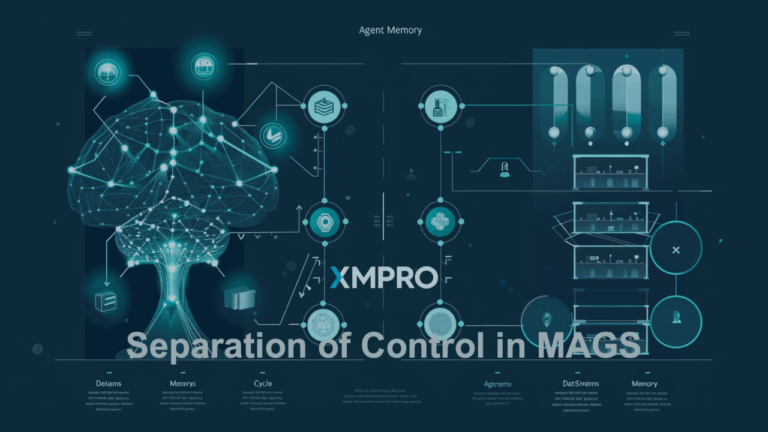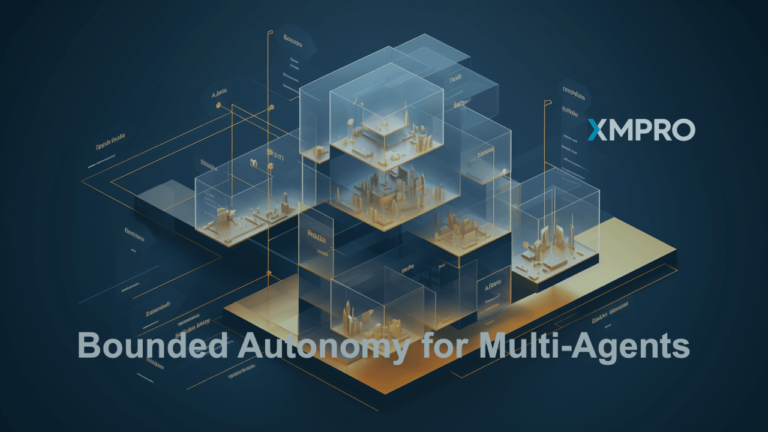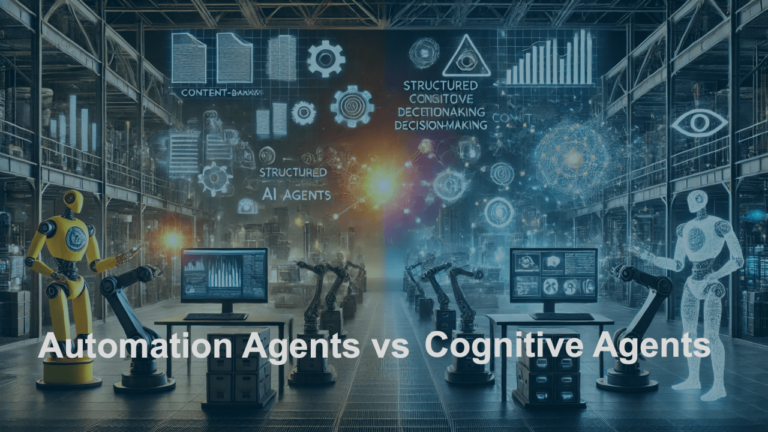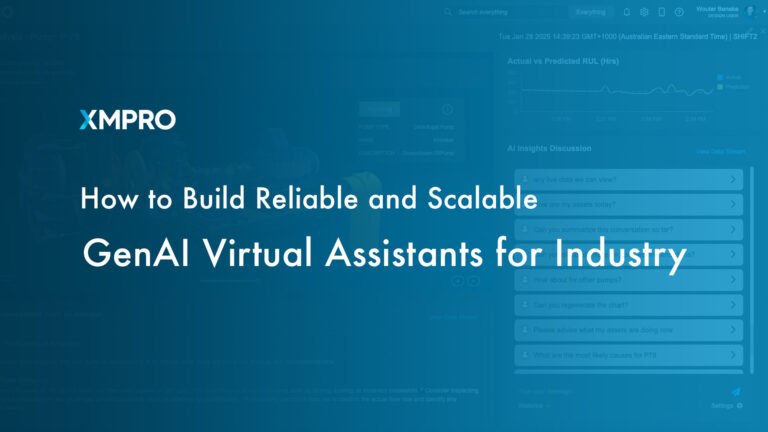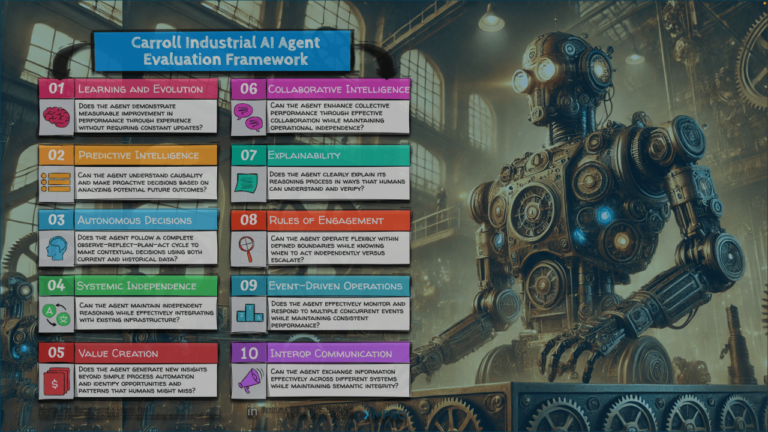
One of the biggest challenges that industrial companies have when evaluating industrial IoT is finding “use cases” or scenarios where it can be used to improve operations. IoT is expected to bring value to an organization in one of the following ways:
- Reduce cost
- Increase revenue
- Increase customer satisfaction
- Reduce risk (improve compliance)
Use cases or applications for IoT in asset intensive industries such as Mining, Oil & Gas, Energy & Utilities and Manufacturing differ from applications in finance or healthcare amongst others.
Asset intensive industries often have large, complex equipment units such as SAG mills, offshore platforms, massive haul trucks or processing plants with pumps, heat exchangers, mixers etc. Even though it may be the same type of equipment used in different applications, it will operate differently and have its own asset performance characteristics based on how and where it is used. For this reason, use cases or scenarios for IoT in these asset intensive industries will differ almost on a case by case basis.
Industrial IoT is not like buying a marketing automation platform or CRM where the application and use cases are similar across most industries. There is no single “use case” or scenario that solves all asset performance problems.
We often hear, “this is GREAT, do you have a solution for:
- Long, high volume conveyors
- Hydrocarbon compressors
- Cyclone pumps
- (insert your ‘biggest headache’ equipment)”
The good news is that in working with a number of the largest asset intensive companies in the world, we discovered the 3 Industrial IoT patterns that describe most of their scenarios or use cases. It revolves around the problem that they want to solve, where they are in their journey and what the level of their IoT readiness is.
The 3 common patterns that describe more than 90% of all the applications we’ve come across are:
- Condition Monitoring
- Predictive Operations
- Asset Portfolio Management
Condition Monitoring
Even though the end goal of most organizations is to have predictive and prescriptive maintenance and operations, almost all start the IoT journey with condition monitoring.
This requires integration to front-end IoT and OT data from a range of data sources. Once the data is combined and accessible in a data stream, basic analytics and business rules can be applied to find exceptions or thresholds that are exceeded. A typical example would be to monitor the temperature and vibration on a bearing and create an exception when either the vibration or temperature goes above a set limit. This would then trigger an action to respond to this exception in a timely manner. The action could be as simple as an SMS or email or as advanced as the automatic creation of a work order in an EAM system. It could also be a custom workflow application that is specific to the equipment or problem type.
Most companies can start with Condition Monitoring use cases with low investment of resources and cost. Solutions can be built in a matter of days and deliver advanced decision support quickly. The ROI is quick and with XMPro’s Data Stream Designer end-users such as engineers can create new scenarios (use cases) quickly and in an iterative and agile way to respond to continuous intelligence requirements as they emerge. It is not uncommon for a reliability engineer to create 10-15 data streams to monitor key assets. Previously, these solutions would have to be custom coded. The solutions would not only be costly to create but they would also be outdated when completed, as plant conditions may have changed.
Condition Monitoring may not be as sophisticated as predictive use cases, but it often delivers significant savings or opportunities that prove the value of Industrial IoT applications to the executives of organizations that are traditionally conservative and don’t want to be “leading edge”.
Examples include monitoring mobile assets (haul trucks etc.) processing plants, supply chains, long, high volume conveyor systems, rotating equipment etc.
Predictive Operations
The second “pattern” that we found in industrial IoT scenarios is where companies add predictive capability to the condition monitoring pattern. It still brings data from a multitude of sources, but it extends the analytics with predictive and prescriptive capabilities. Organizations “wire-in” AI and machine learning models into the data streams to predict failure and operational status based on real-time data. XMPro’s data streams provide a vehicle to “weaponize” AI and integrate it with the business workflows to change the way operators respond to potential failures.
It acts as a real-time recommendation engine. By adding XMPro’s workflow-based Action Hub with business rules and human-to-human workflow it turns the predictive solution into a prescriptive solution with Best Next Actions and skills-based routing.
XMPro supports most predictive analytics platforms and all the model types, ranging from multi-variate anomaly detection through to regression, neural networks and other deep learning approaches.
Examples includes predictive maintenance, predictive quality and predictive operations.
Asset Portfolio Management
Asset Portfolio Management is a pattern that combines condition monitoring and predictive operations across a portfolio of assets. It provides an OEE (Overall Equipment Effectiveness) measure for a collection of assets. It leverages the capability of “monitoring” and in some cases “predicting” for applications where the business requirement has moved beyond managing single assets to the performance of a collection of assets.
Examples includes a fleet of mobile assets to prioritize maintenance, predicting which wells are declining on an oil field or where in a continuous product process a bottleneck is likely to occur that will impact the throughput.
Other Applications
Most of the other scenarios and use cases that we see are based on the 3 patterns described above. An Intelligent Supply Chain “Track & Trace” solution with a blockchain Smart Contract is based on the Condition Monitoring pattern where the actions now include IoT data appended to a blockchain and instead of creating a work order, we now pass the (oraclized) IoT data to a distributed ledger-based smart contract. If we build some predictive capabilities into the supply chain solution to predict demand for example, it now follows a Predictive Operations pattern.
The underlying technology (traditional or emerging) does not change the business objective of a solution:
- What is happening to a critical asset and how do I respond? (Condition Monitoring)
- What is likely to happen to that asset, when and how do I respond? (Predictive Operations)
- What is going on in my operations and how do I plan what to do? (Asset Portfolio Management)
Which pattern does your “use case” or business problem follow?
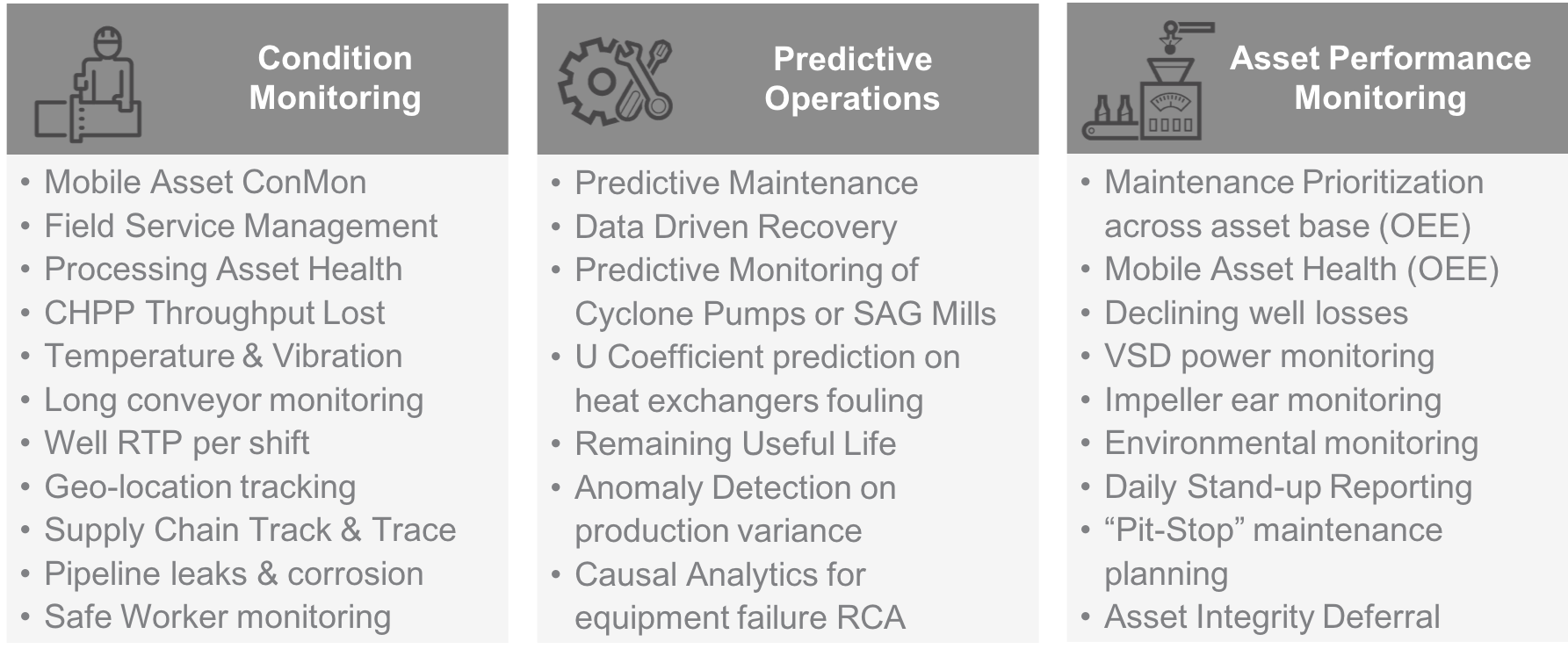
See our Blueprints for each of these patterns to get you started for quick time to value.













